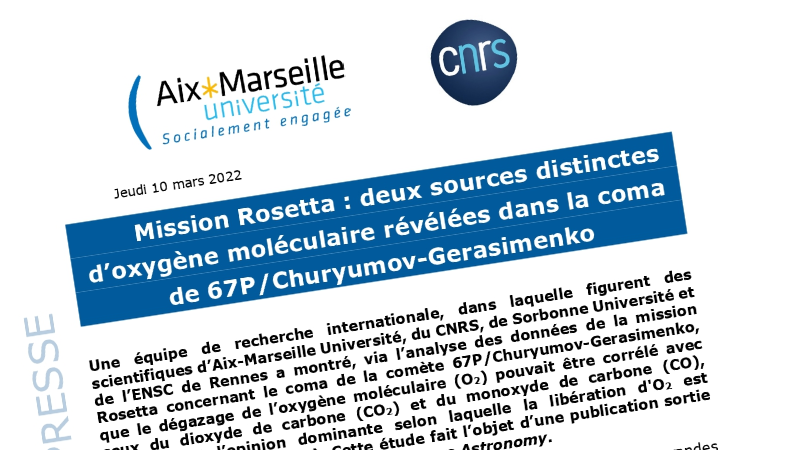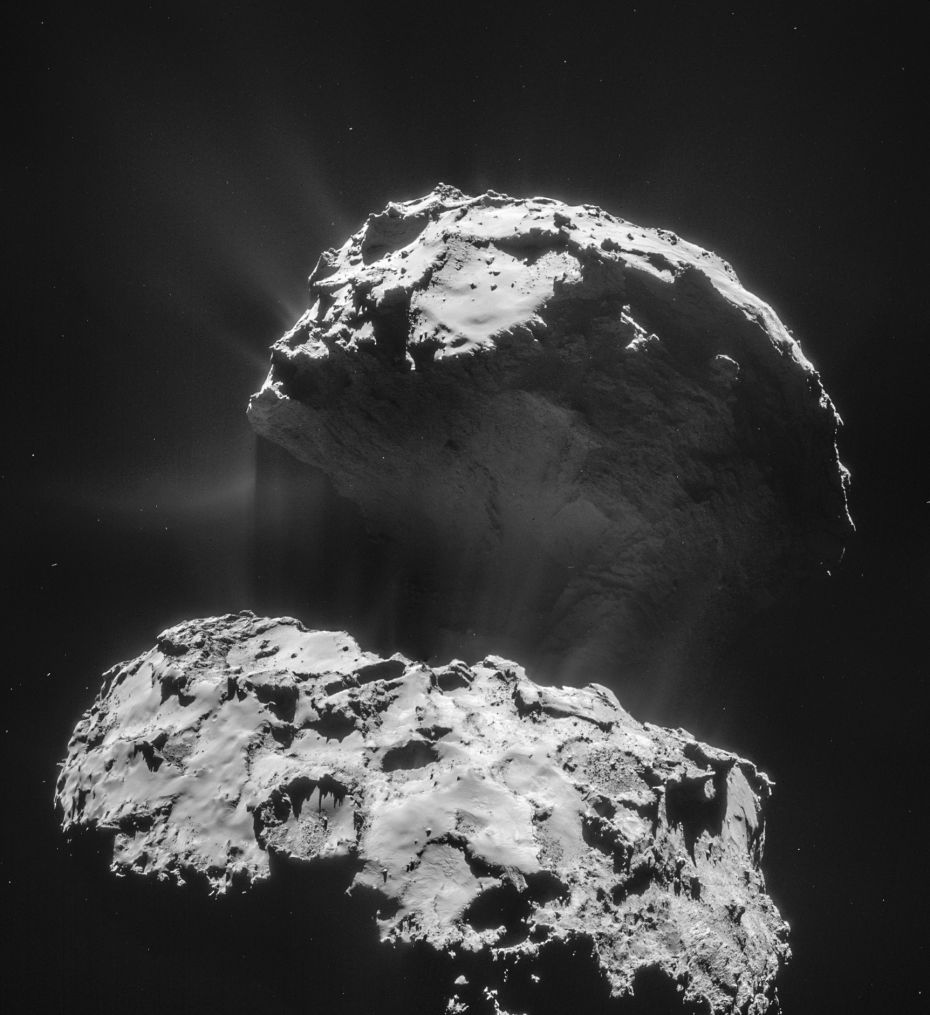
An international research team, including scientists from Aix-Marseille Université, CNRS, Sorbonne Université and ENSC of Rennes has shown, through the analysis of data from the Rosetta mission concerning the coma of comet 67P/Churyumov-Gerasimenko, that the outgassing of molecular oxygen (O2) could be correlated with those of carbon dioxide (CO2) and carbon monoxide (CO), contradicting the prevailing view that the release of O2 is always linked to water (H2O). This study is the subject of a publication released on Thursday March 10, 2022 in the journal Nature Astronomy.
One of the biggest surprises of the Rosetta mission was the detection of large amounts of molecular oxygen in the coma of comet 67P/Churyumov-Gerasimenko. Determining the source of the surprisingly high abundance of this molecule, which is fundamental for chemical evolution, has been a challenge. All scenarios proposed so far depended on the assumption of simultaneous outgassing of oxygen and water over time.
By analyzing the variations of the outgassing during the comet's revolution, they were able, on the contrary, to demonstrate the existence of two distinct reservoirs of O2 in 67P/Churyumov-Gerasimenko. The first one, whose degassing is not correlated to that of H2O, is a primitive source located deep inside the nucleus and dating from before the formation of the comet. The second, which is a source directly correlated to H2O, was formed in contact with water ice during the outgassing of the primitive reservoir and during the thermal evolution of the nucleus.
These new results imply that the molecular oxygen observed in 67P/Churyumov-Gerasimenko was formed by a chemical mechanism that could have taken place in the protosolar nebula or in the interstellar medium. A similar process may have occurred in other comets such as 1P/Halley where the presence of molecular oxygen has been confirmed at levels similar to those measured in 67P/Churyumov-Gerasimenko.
More information: A. Luspay-Kuti, O. Mousis, F. Pauzat, O. Ozgurel, Y. Ellinger, J. I. Lunine, S. A. Fuselier, K. E. Mandt, K. J. Trattner, S. M. Petrinec, Dual storage and release of molecular oxygen in comet 67P/Churyumov-Gerasimenko, Nature Astronomy, in press. https://doi.org/10.1038/s41550-022-01614-1


